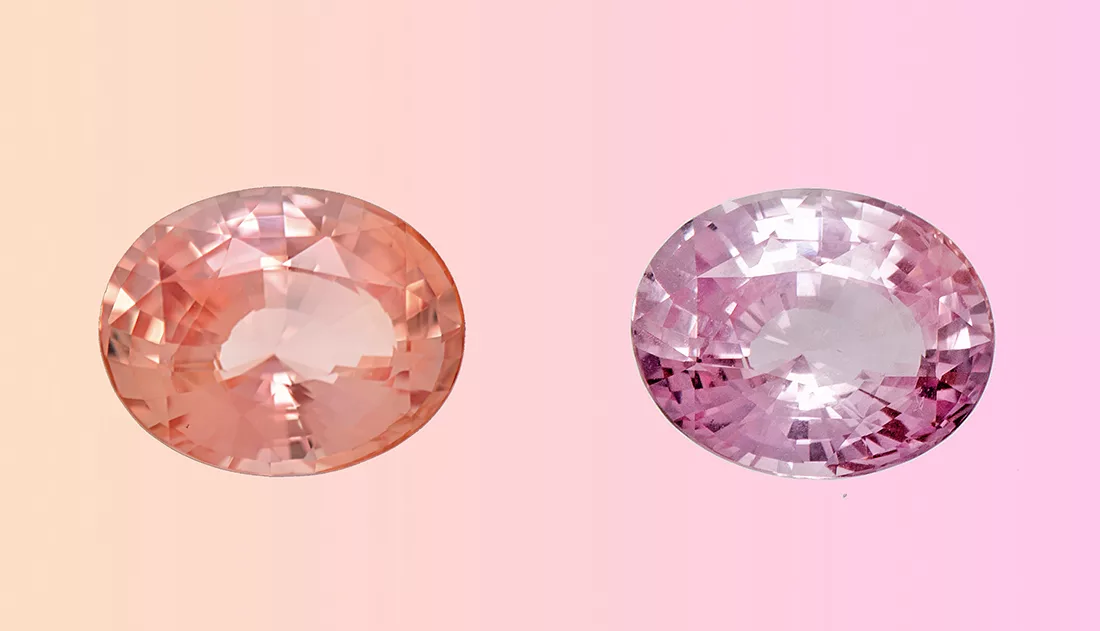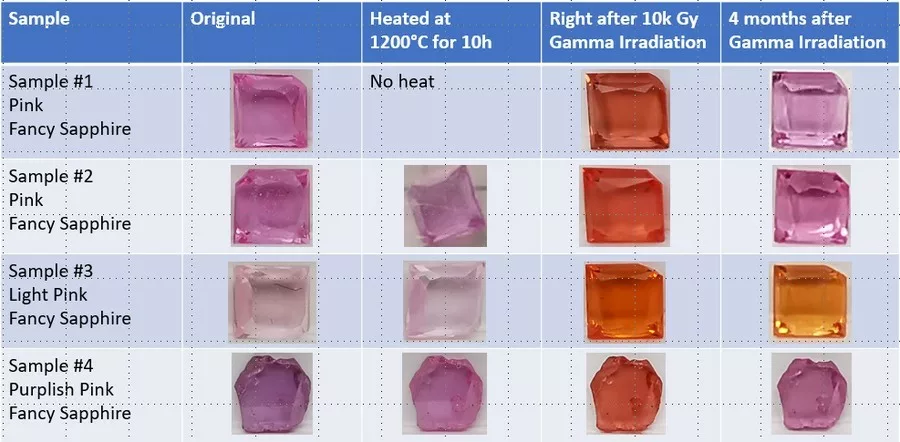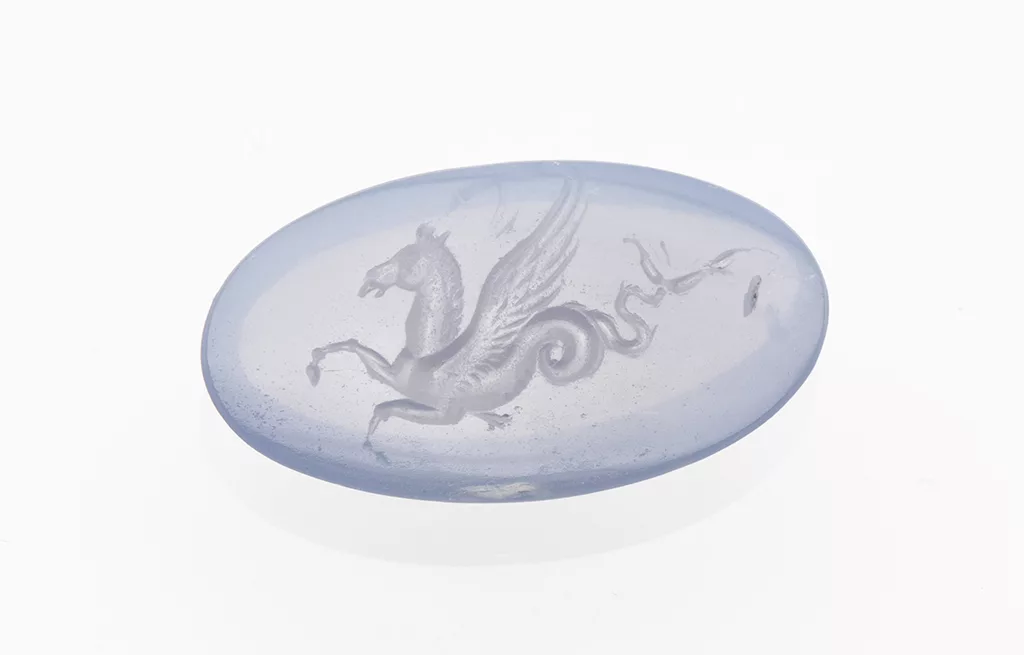
Roman sapphire intaglio
by Dr. M.S. Krzemnicki, first published in Facette 26 (May 2020)
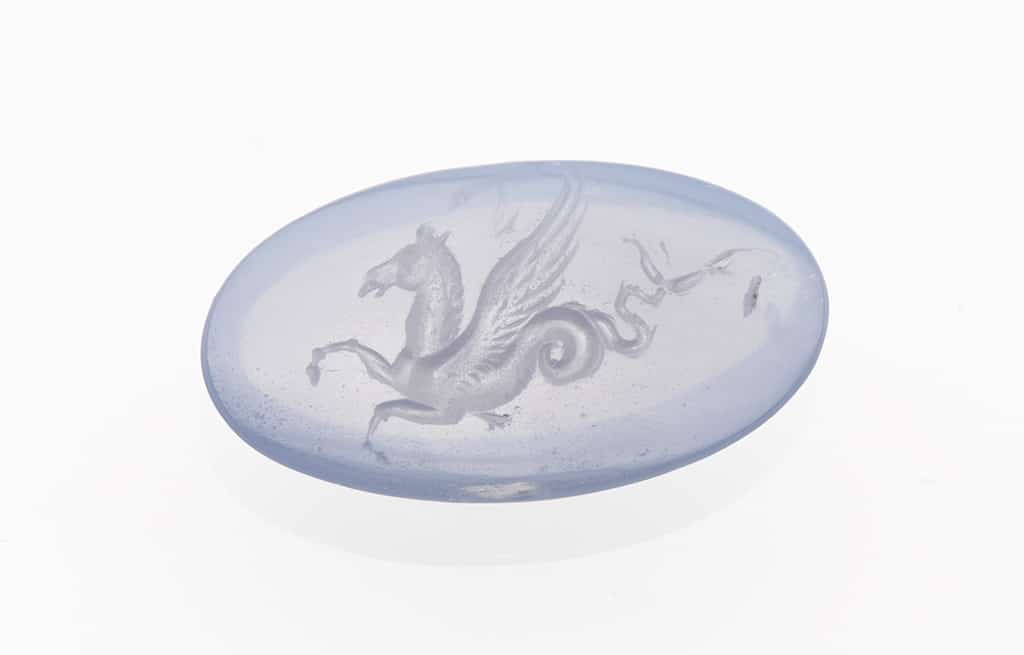
In 2019, the Swiss Gemmological Institute SSEF in collaboration with the Istituto Gemmologico Nazionale IGN Rome (Italy) were able to analyse in detail a unique Roman sapphire intaglio (Figure 1), excavated in 1986 in the House of Gemmarius (Sodo, 1988) in the UNESCO World Heritage site of Pompeii (Italy). The described Roman intaglio can be considered a unique cultural heritage, not only because it is made of sapphire, a gem known to Romans but only rarely used in their jewellery (Spier, 2012), but also because it combines beauty and quality (the craftsmanship of an ancient gem engraver) with excellent conservation and a fully documented archaeological provenance. This is very much in contrast to other ancient sapphire intaglios and carvings described in literature, most of which are from historic gem collections and have a much more debatable and obscure original geographic and historic provenance.
Furthermore, our study is one of the rare cases where a documented archaeological jewel could be analysed in a laboratory with advanced analytical methods.
Ancient Pompeii
Ancient Pompeii was an urban settlement, located on the southern slopes of Mount Vesuvius in southern Italy. Thanks to its climate and its location, Pompeii became an important commercial centre even before becoming part of the Roman Empire in the 1st century BC. In November 79 AD, an explosive eruption of the volcano Mount Vesuvius buried Pompeii under about six metres of pumice and ashes. During the eruption about 1,500 inhabitants died (the city’s population was estimated to be between 6,000 and 20,000 people), among them the famous naturalist Pliny the Elder, author of the encyclopaedic Naturalis Historia, still today a fundamental reference work for the ancient use and provenance of gems. Pompeii was not rebuilt again, and by 120 AD vegetation began to cover the territory it once occupied until it definitively disappeared until the first archaeological excavations in the 18th century rediscovered it.

During the excavation of Pompeii, a large number of jewellery and gem objects were discovered. In the House of Gemmarius, considered the private house and (work)shop of a gem cutter and jeweller in the southeastern part of ancient Pompeii, two wooden boxes were discovered in 1986, containing amongst others the described Roman sapphire intaglio.
Results of the Study
The investigated sapphire intaglio
is a flat oval cabochon
of 11.62 ct, engraved with the mythical hippocamp, a
winged ‘sea-horse’ with the upper body of a horse and the lower body and tail of a fish.
Since ancient times, this mythological creature is one of the most common emblems
of the marine world and especially often engraved in ‘sea-coloured’ gem materials, notably
aquamarine (pers. comm.
Thoresen, 2019).
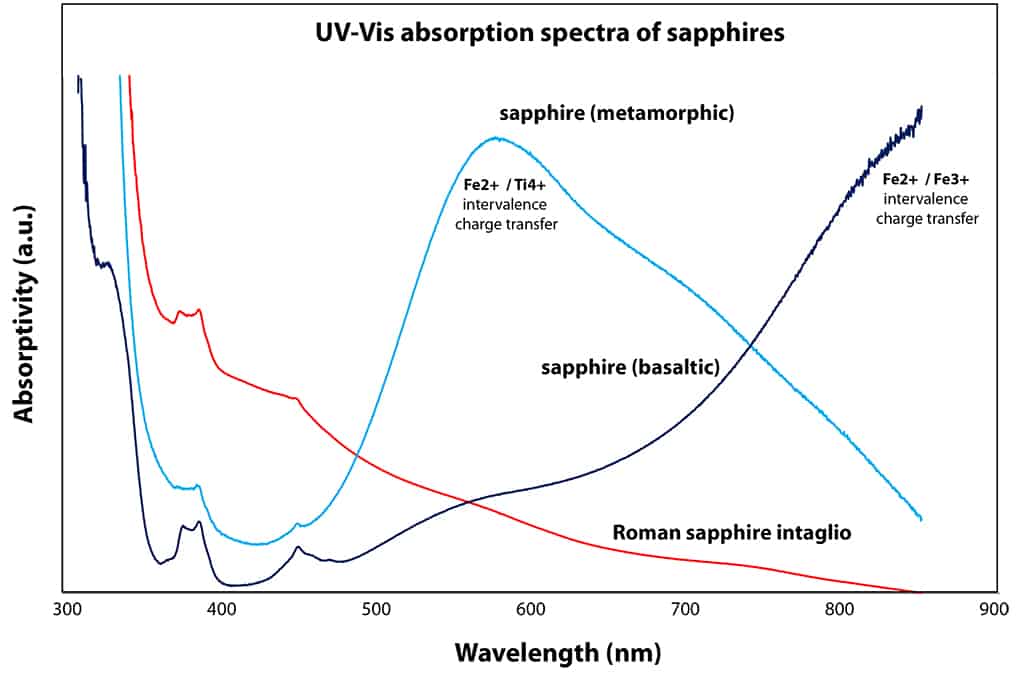
Interestingly, the bluish grey appearance of the Roman sapphire intaglio is due to Rayleigh scattering by sub-microscopic inclusions and is not related to any intervalence charge transfer process (e.g. Fe2+-Ti4+ and Fe2+-Fe3+) as can be seen in the UV-Vis absorption spectrum (Figure 3). In transmission mode, the sapphire intaglio is in fact greyish brown (Figure 4) related to the visible turbidity caused by the presence of tiny and dispersed sub-microscopic inclusions. Similar scattering effects are well known in metamorphic sapphires (e.g. from Kashmir, Sri Lanka and Madagascar) and basaltic sapphires, but only rarely seen as being the only cause of colour (e.g. basaltic sapphires from Nigeria; Pardieu et al., 2014).

Based on our analytical data and microscopic observations, we can conclude that the studied Roman intaglio was crafted from an unheated sapphire originating from an alkali basalt-related deposit. An origin from the gem-gravels of Sri Lanka – known since antiquity as a source of (metamorphic) sapphires and many other gemstones- can be definitively excluded, although the gem’s light bluish grey colour and appearance might be considered reminiscent of some Sri Lankan sapphires. Due to its close similarity in trace-element composition to basaltic sapphires from various deposits, a clear geographic attribution for the origin of this Roman sapphire intaglio cannot be accomplished based on the currently available data.
Origin of the Ancient Sapphire
In addition to the existing literature, which commonly refers to the origin of ancient sapphires as Southeast Asia and the Far East, we propose in light of historically documented extensive trade relations between ancient Rome and Ethiopia (the kingdom of Aksum) that an Ethiopian origin of the studied Roman sapphire intaglio as similarly plausible, although we have no direct evidence (by gemmological data, archaeological excavations, or historical accounts) for our hypothesis. Another option for such basalt- related sapphires might be the sites in the Massif Central in France. Although first mentioned only in the 13th century (Forestier, 1993), they might have been known as early as the 1st century AD.

This study clearly shows that more detailed research on basalt-related ancient (Roman) sapphires is necessary. Especially with the recent progress in gemstone testing using chemical fingerprinting (e.g. GemTOF; Wang et al. 2016), statistical methodology (e.g. non-linear algorithms; see Wang et al., 2019) and stable isotopes (oxygen; see Giuliani et al. 2000, 2009, 2014) it might be possible to verify in future if the recently discovered sapphire-rich deposit near Aksum was known in ancient times as a source for gem-quality basaltic sapphires of milky bluish and dark blue colours.
Want to learn more about sapphires?
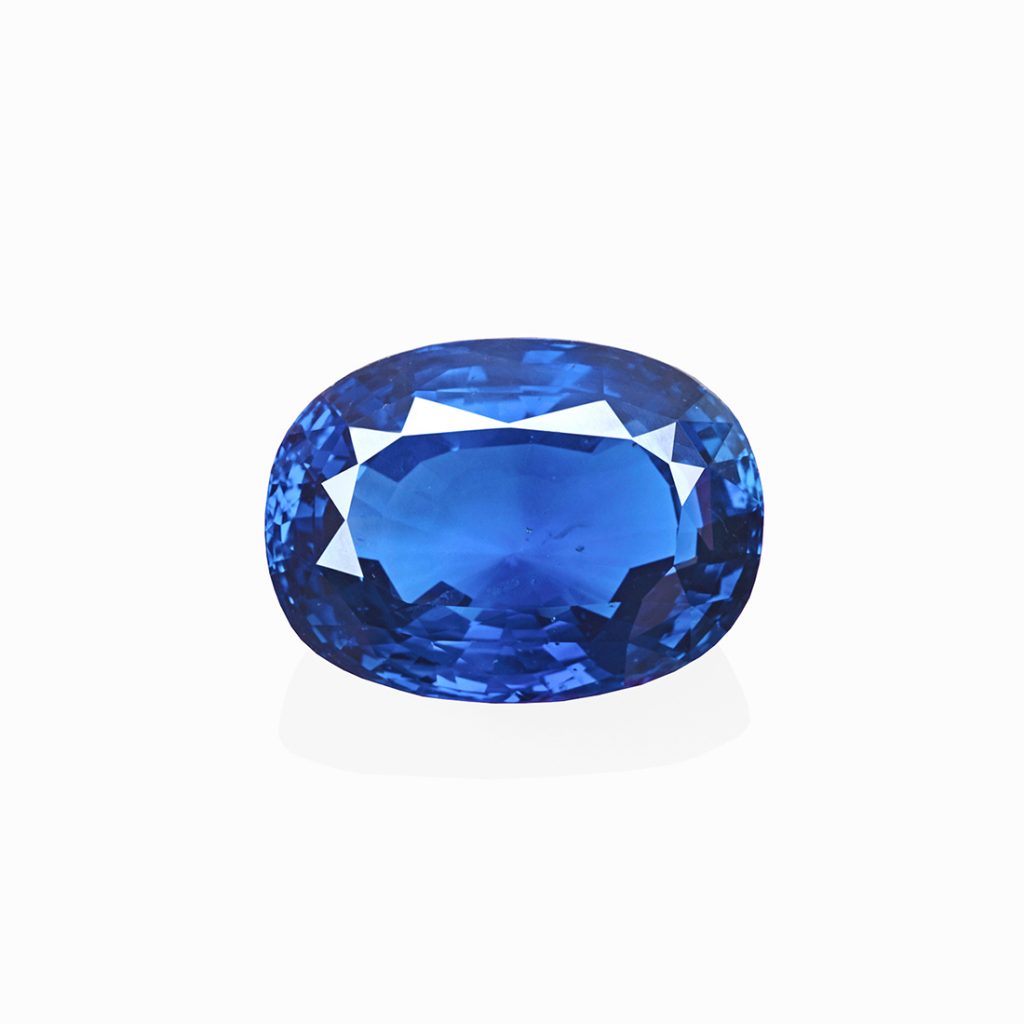
Sign up for our free online course: Introduction to sapphires
